You can eat wild strawberries (Fragaria vesca). Wild strawberries are small, red or pink berries that grow naturally in many parts of the world, including North America and Europe. They are often found in woodlands, meadows, and grassy areas.
Fragaria vesca, commonly known as wild strawberry, woodland strawberry or alpine strawberry, is a small, perennial plant that produces delicious and edible berries.
It belongs to the Rosaceae family and is native to various regions in North America, Europe, and Asia.
Are there different types of wild strawberries?
There are several types of wild strawberries (Fragaria vesca) that can be found in various regions. While they all belong to the same species, there can be some differences in their characteristics, such as size, flavor, and growth habits.
What Are You Foraging For Right Now?
We're thrilled to hear your ideas. What would you like to submit today? Feel free to share your thoughts and experiences with us.
Here are a few notable types of wild strawberries:
- Fragaria vesca var. vesca (woodland strawberry): This is the most common type of wild strawberry. It produces small, sweet, and aromatic berries that are typically red when ripe.
- Fragaria vesca var. semperflorens (perpetual or everbearing strawberry): This variety is known for producing berries throughout the growing season, rather than having a single main fruiting period.
- Fragaria vesca var. alba (white alpine strawberry): These wild strawberries have white or pale pink berries instead of the typical red color.
- Fragaria vesca var. vesca ‘Golden Alexandria’: This cultivar produces yellow or golden berries. While less common than red varieties, it offers a unique color and flavor experience.
- Fragaria vesca var. vesca ‘White Soul’: Another white variety, ‘White Soul’ produces small, sweet, and white berries with a distinct flavor.
- Fragaria vesca var. vesca ‘Regina’: ‘Regina’ is a red variety known for its exceptional flavor and larger berry size compared to other wild strawberries.
- Fragaria vesca var. vesca ‘Ruegen’: This cultivar is prized for its large, sweet, and flavorful berries. It’s a popular choice among gardeners and foragers.
- Fragaria vesca var. vesca ‘Alexandria’: ‘Alexandria’ is known for its vigorous growth and consistent berry production. The berries are small and flavorful.
How to Identify Wild Strawberries?
Identifying wild strawberries involves observing key characteristics of the plant, including its leaves, flowers, and berries.
Here’s a step-by-step guide to help you identify wild strawberries:
Leaf Structure:
- Wild strawberry plants have trifoliate leaves, meaning each leaf is divided into three leaflets.
- Each leaflet is oval or heart-shaped, with toothed or serrated edges.
- It typically has bright and glossy green leaves.
Leaf Arrangement:
- The leaves are alternately arranged along the stem.
Flowers:
- Wild strawberries produce small, white flowers with five petals.
- The flowers have a yellow center with numerous yellow stamens.
- Flowers may appear singly or in small clusters.
Berry Appearance:
- The berries of wild strawberries are small and round, usually ranging from 1/2 to 3/4 inches (1.3 to 2 cm) in diameter.
- The ripe berries are typically bright red, but some varieties may have pink or white berries.
Fragrance:
- Wild strawberries are known for their aromatic scent. When you crush a leaf between your fingers, you should be able to detect a pleasant strawberry aroma.
Habitat:
- Wild strawberries are often found in woodlands, meadows, grassy areas, and along the edges of forests.
- Look for them in areas with well-drained soil and moderate sunlight.
Seasonality:
- Wild strawberries usually start flowering in spring and continue into early summer.
- Berries ripen in late spring and summer.
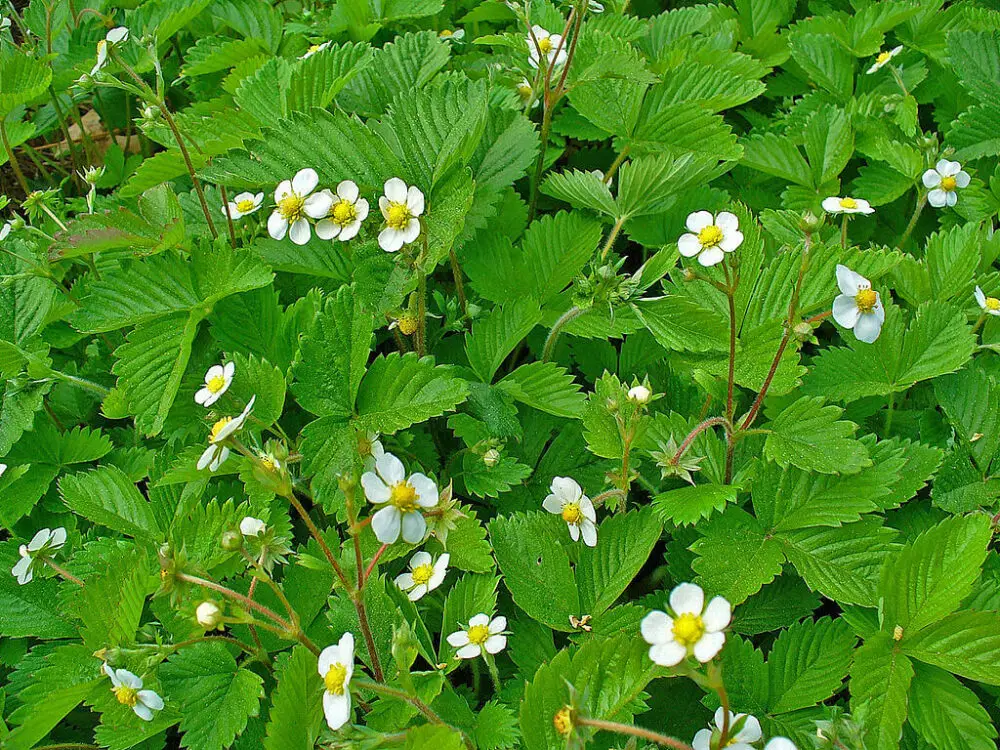

Check our video below for more information on how to identify and use wild strawberries in the kitchen.
How Can You Tell the Difference Between Strawberries and Wild Strawberries?
Regular strawberries strawberries (cultivated varieties such as Fragaria virginiana) and wild strawberries (Fragaria vesca) share many similarities, but there are key differences that can help you distinguish between the two.
Here’s how you can tell the difference between strawberries and wild strawberries:
| Name | Cultivated strawberry | Wild strawberry |
| Size | Larger | Smaller |
| Leaf shape and edges | 3 leaflets, larger and less serrated | 3 leaflets, more elongated and toothed or serrated along the edges |
| Flowers | Larger with a yellow or greenish-yellow center with fewer stamens | Smaller, often with a yellow center with numerous yellow stamens |
| Berry size and shape | 1 to 2 inches (2.5 to 5 cm) in diameter | 1/2 to 3/4 inches (1.3 to 2 cm) in diameter |
| Flavor | Sweet | Sweeter and more fragrant |
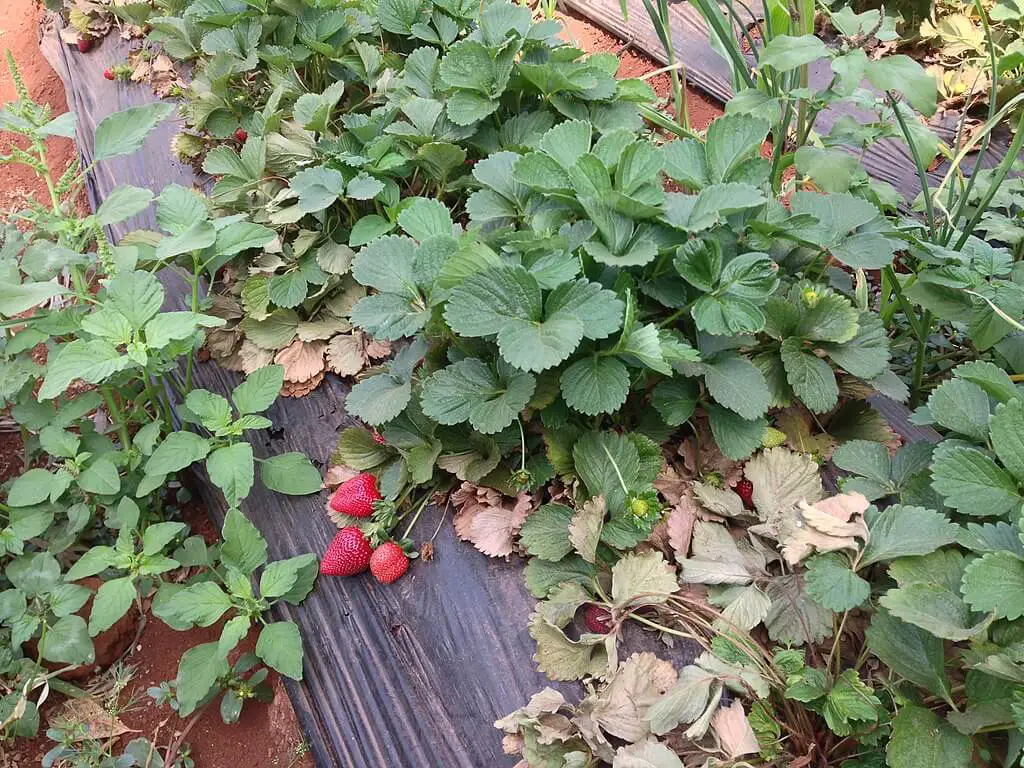
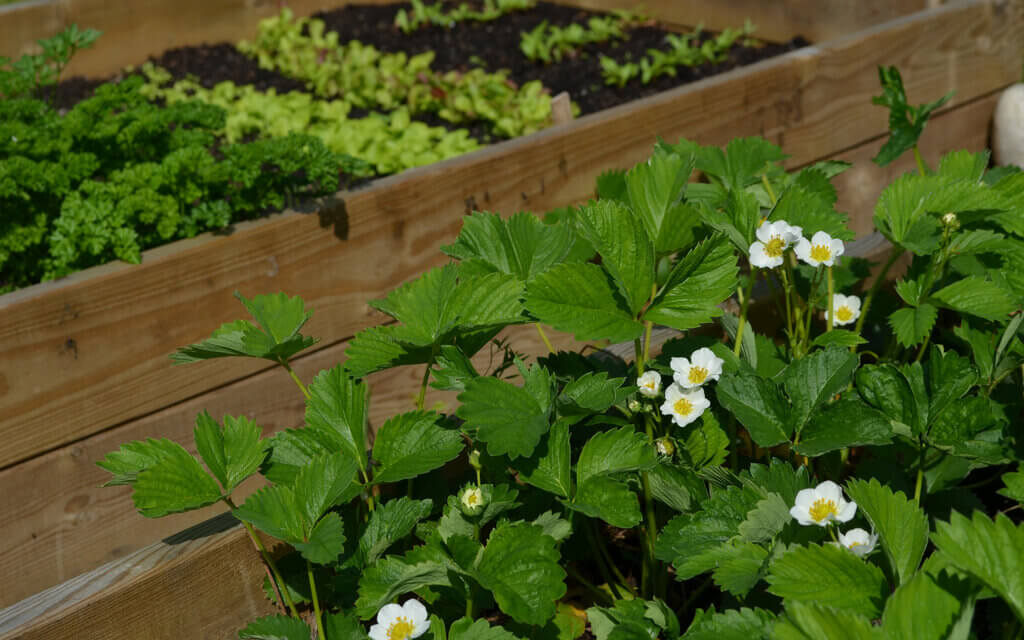

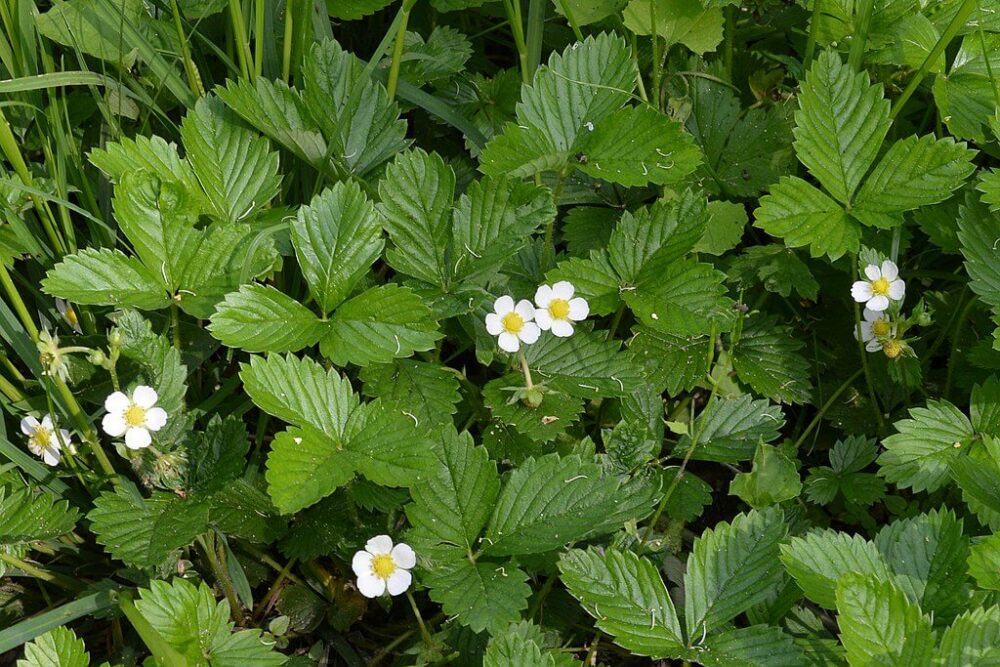
What do Wild Strawberries Taste Like?
Wild strawberries are known for their sweet and aromatic flavor, which is often more intense than that of cultivated strawberries.
The combination of their small size, intense aroma, and sweet flavor makes wild strawberries a sought-after delicacy among foragers and enthusiasts of wild foods.
Are there poisonous wild strawberry look alikes?
Yes, there are some plants that resemble wild strawberries but are not edible and can even be toxic. It’s important to be able to distinguish between true wild strawberries and their poisonous look-alikes to ensure safe foraging.
Here are a couple of common plants and false strawberries that may be mistaken for wild strawberries:
- Mock Strawberry (Duchesnea indica):
- Mock strawberry, also known as Indian strawberry, looks very similar to wild strawberries but produces yellow flowers instead of white.
- The berries of mock strawberries are also red and resemble wild strawberries, but they lack the intense aroma and flavor.
- Mock strawberry berries are considered to be bland and lacking in sweetness, making them unappealing to eat.
- While mock strawberries are not highly toxic, they are not typically consumed due to their lack of flavor and potential to cause stomach upset in some individuals.
- Barren Strawberry (Waldsteinia fragarioides):
- Barren strawberry is another plant that resembles wild strawberries. It has similar trifoliate leaves and yellow flowers.
- The berries of barren strawberry are smaller and less flavorful than those of wild strawberries.
- Barren strawberry is not toxic, but its berries are generally unpalatable and not sought after for consumption.
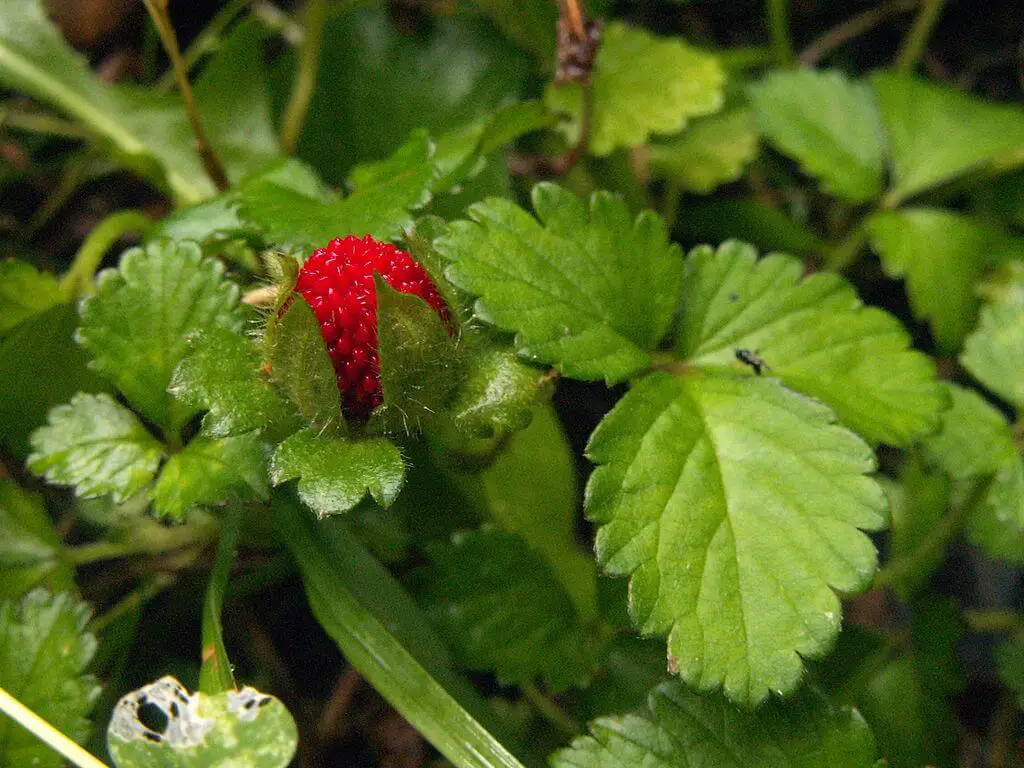
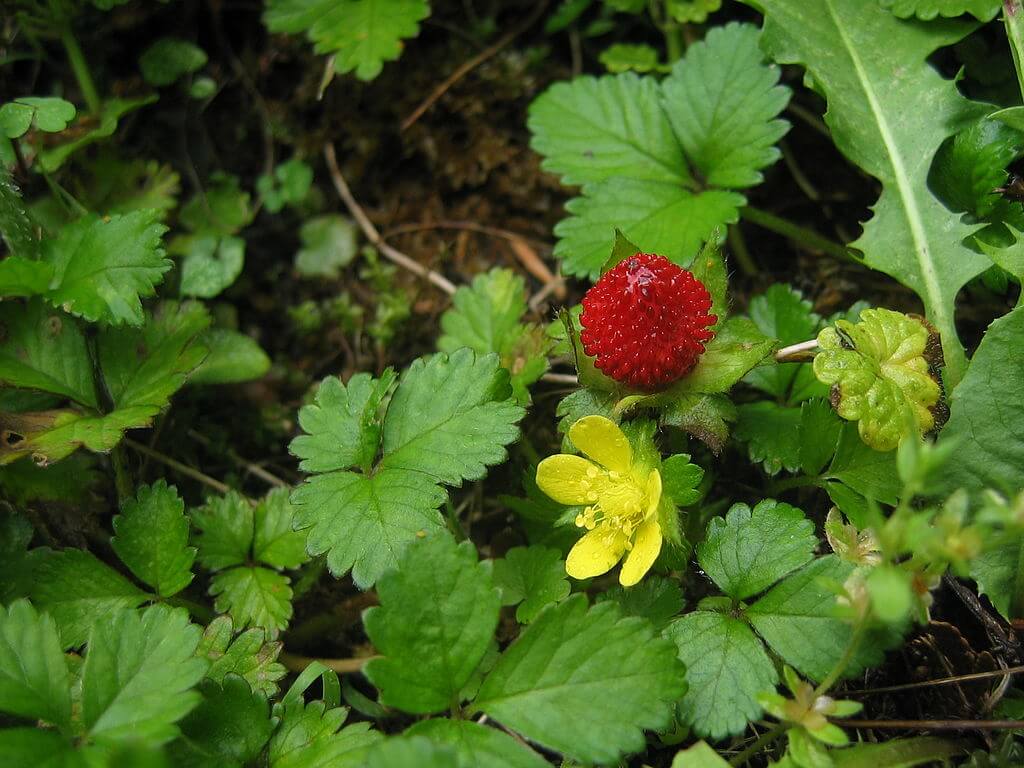
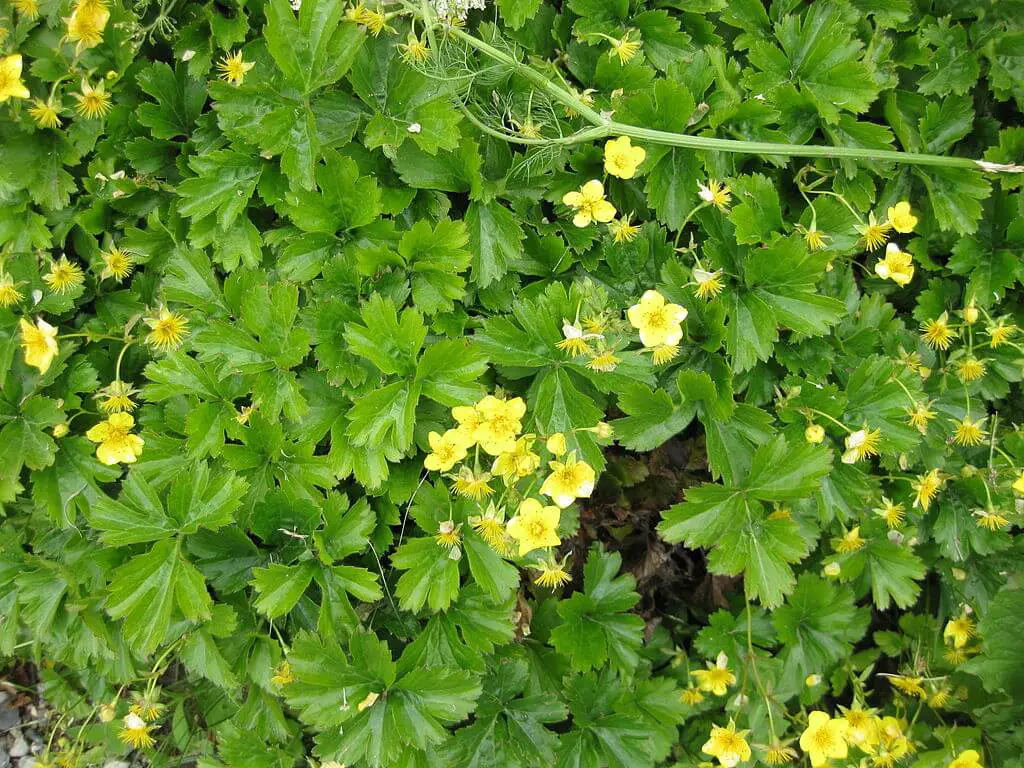
What are the benefits of eating wild strawberries?
- Rich in Vitamins and Minerals: Wild strawberries are a good source of vitamins and minerals, including vitamin C, vitamin A, potassium, and manganese.
- Antioxidant Properties: Wild strawberries contain antioxidants such as anthocyanins, quercetin, and ellagic acid. Antioxidants help protect cells from oxidative stress and may have anti-inflammatory effects.
- Natural Flavor and Aroma: Wild strawberries are prized for their intense and aromatic flavor. Their unique taste can add a delightful and natural sweetness to dishes without the need for added sugars.
- Dietary Fiber: Wild strawberries contain dietary fiber, which is important for digestive health. Fiber can promote regular bowel movements and help maintain a healthy gut.
- Low in Calories: Wild strawberries are relatively low in calories and can be a guilt-free snack option for those looking to manage their calorie intake.
- Phytonutrients: Wild strawberries contain various phytonutrients that have potential health benefits. These compounds may contribute to their antioxidant, anti-inflammatory, and potential health-promoting effects.
Can you buy wild strawberries?
Wild strawberries are not commonly sold in grocery stores or markets like their cultivated counterparts.
However, some specialty or gourmet markets, farmers’ markets, or local foragers might occasionally offer wild strawberries for sale, especially during their limited harvest season. These may be sourced from small-scale foragers who gather them from natural habitats.
If you’re interested in trying wild strawberries, you might have better luck finding them in areas with a strong foraging community or through local events that celebrate wild foods.
Where and when to Forage for Wild Strawberries?
Wild strawberries can be found in various regions across the United States, particularly in temperate and cool climates. They tend to thrive in natural habitats such as woodlands, meadows, grassy areas, and along the edges of forests.
Generally, you can start looking for wild strawberries in spring when they start flowering, and continue through early summer when the berries ripen.
While the exact distribution of wild strawberries can vary, here are some general regions where you might find them:
Northeastern United States:
- Wild strawberries are commonly found in states like New York, Vermont, New Hampshire, Maine, and Massachusetts.
- Look for them in wooded areas, open fields, and along hiking trails.
Midwestern United States:
- States in the Midwest, including Michigan, Wisconsin, Minnesota, and Illinois, also have wild strawberries.
- Check woodland edges, meadows, and grassy areas for these plants.
Pacific Northwest:
- In states like Oregon and Washington, you might find wild strawberries in forested areas, along trails, and in open spaces.
Appalachian Region:
- The Appalachian Mountains region, spanning from Georgia to Maine, can also be a good location for wild strawberry foraging.
Rocky Mountains and Western States:
- Some wild strawberry varieties can be found in the mountainous regions of the Rockies and other western states like Colorado and California.
Northern United States:
- States in the northern part of the country, including Montana, North Dakota, and South Dakota, may have wild strawberries in suitable habitats.
What to read next: A Forager’s Guide to Fragaria Chiloensis (Beach Strawberry)
Getting into the great, wet outdoors in search of edible plants, herbs, fruits and fungi is one of Sarah’s favorite outdoor pursuits. She thinks there’s nothing better than combining her passion for hiking with the start of the foraging season. Sarah’s definitely not afraid of a little rain and dirt, it’s all part of the fun.

